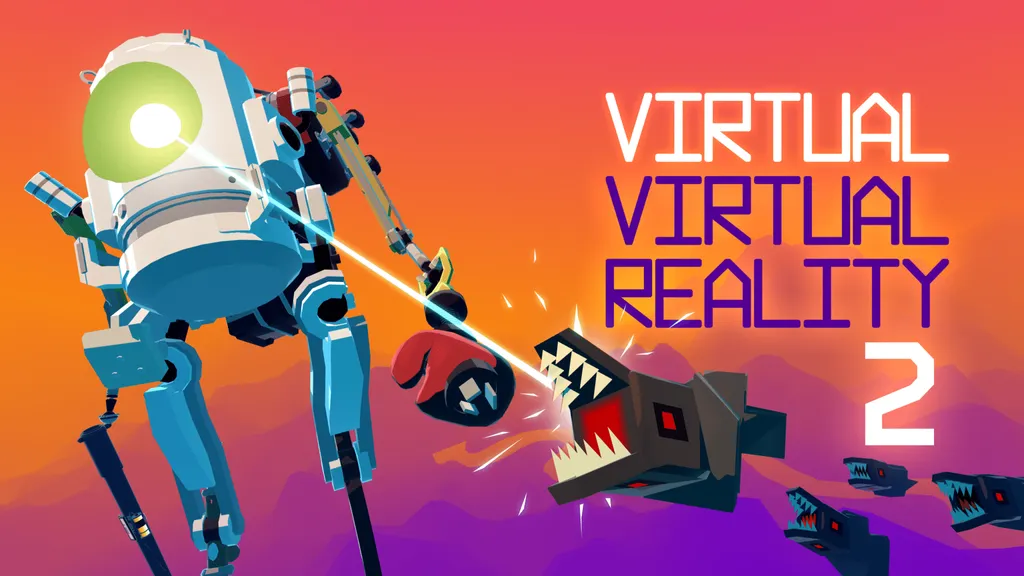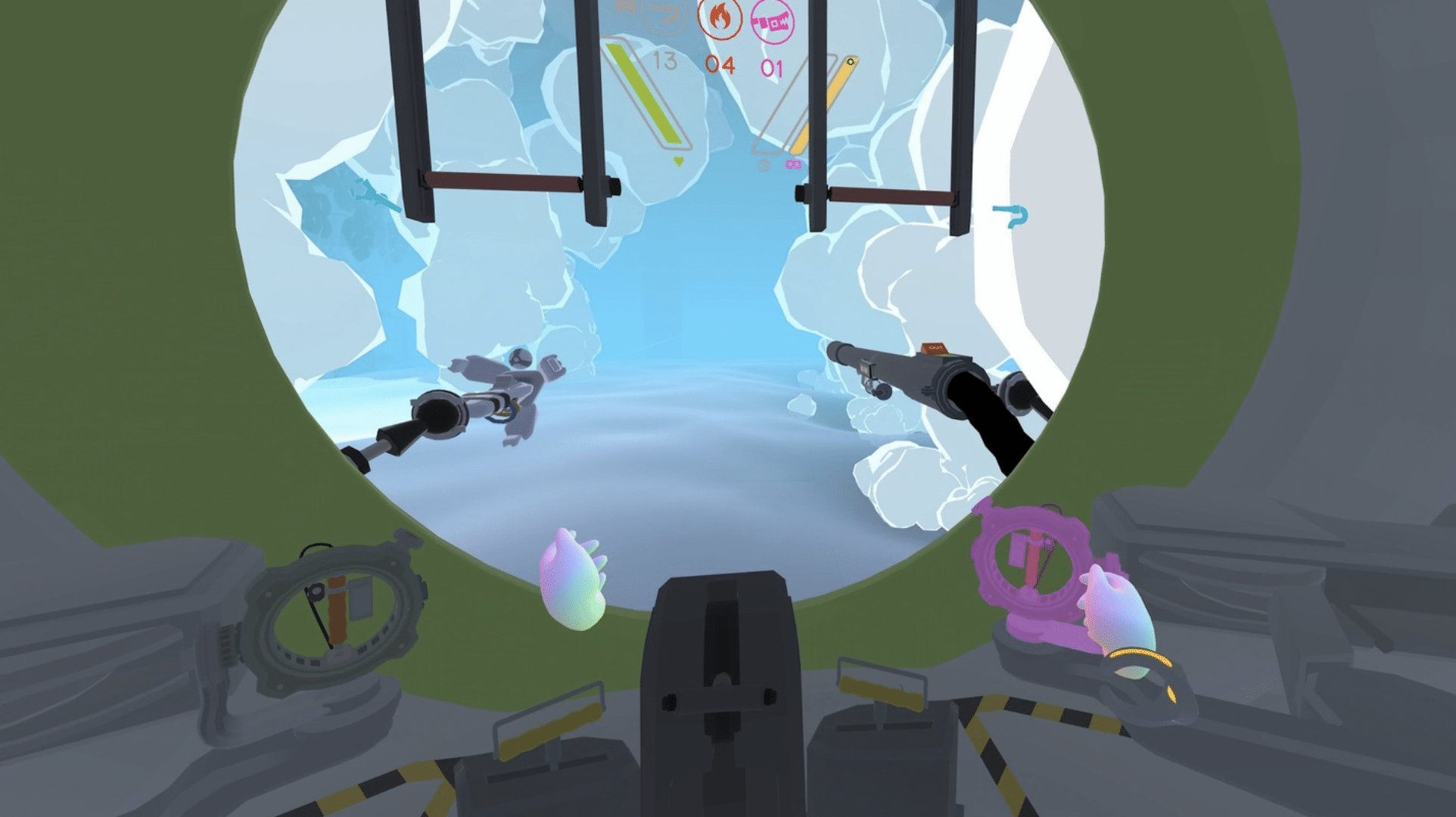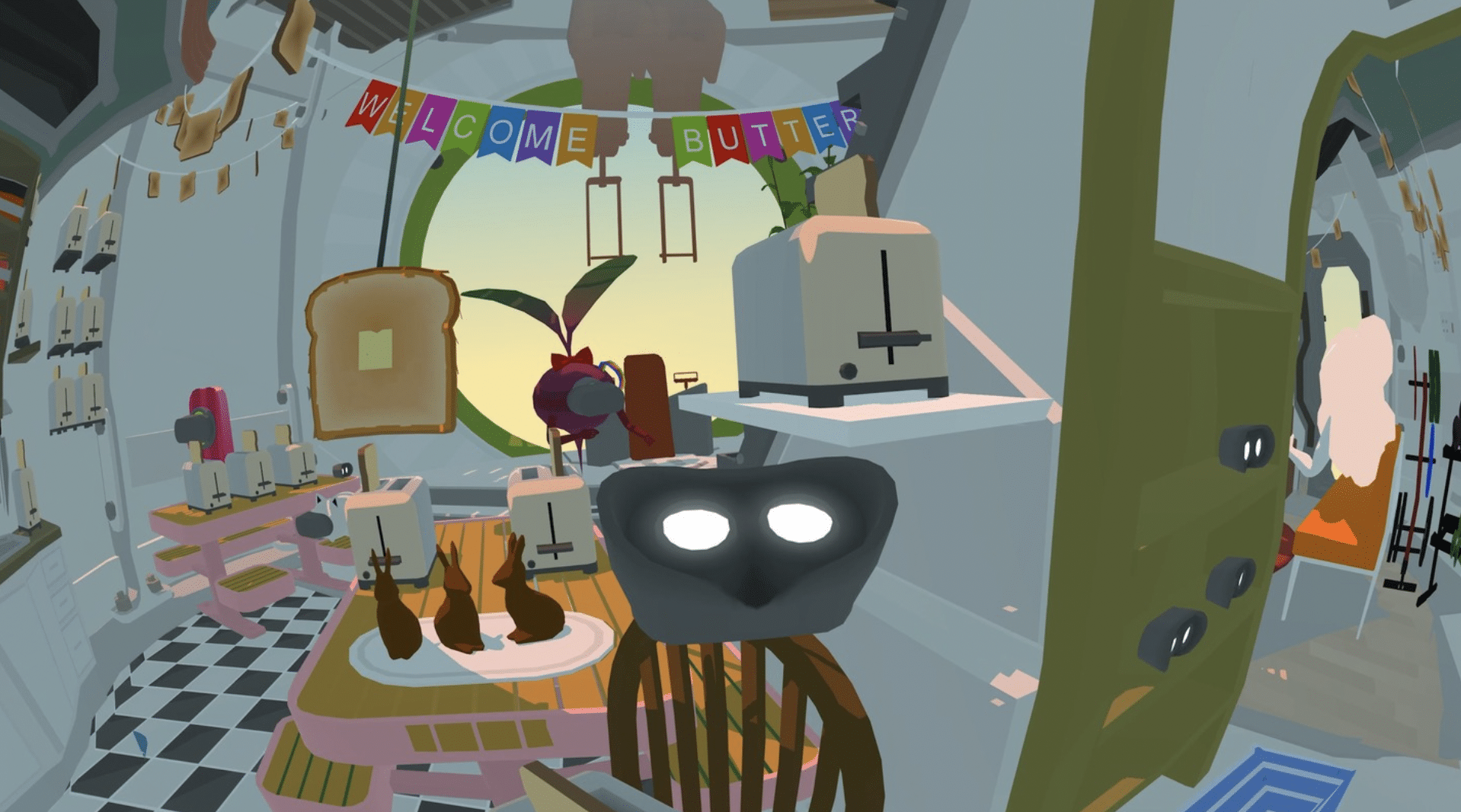Virtual Virtual Reality 2 is available now for Meta Quest 2 and PC VR. But does Tender Claws deliver a satisfying sequel in this mech platforming romp through a fictional metaverse? Here’s our Virtual Virtual Reality 2 review.
Tender Claws has been one of the most interesting studios making virtual reality experiences over the last few years. The team produces artistic experiences that ask questions about the impact of the cutting-edge technology they develop for, and the accompanying gameplay often works hand-in-hand, designed in a way that makes you consider the narrative on a deeper level.
This symbiotic design marked Tender Claws as a studio to watch in 2016, after the release of the original Virtual Virtual Reality (VVR1). While not flawless, VVR1 had a sense of experimental, critical, and artistic engagement that is, even now, often lacking in VR experiences.
A Different, Ambitious Sequel
While VVR2 is definitely a sequel, it’s also clearly designed to work on its own merits. You’ll benefit from having played the original – it sets the tone, several characters return, and there’s a vague continuation of the story with plenty of references – but it’s by no means necessary.
[vc_row][vc_column][vc_cta h2=””]Virtual Virtual Reality 2 Review – The Facts
What is it?: An innovative action-adventure mech platformer and sequel that pays homage to the history of VR while you escape from a collapsing metaverse.
Platforms: Meta Quest 2 (original Quest not supported), Oculus Rift, coming soon to SteamVR.
Release Date: February 11
Price: $29.99/£24.99[/vc_cta][/vc_column][/vc_row][vc_row][vc_column][vc_column_text]
Realistically, this is a completely different game to the original, just set in the same universe. Some elements carry across – similar environmental puzzles, for example – but the sequel blasts the original’s concepts out into something much more genre-bending and experimental, with a slightly less linear approach. It’s a game that tries to offer you the most VR bang for the buck, to varying levels of success.
Tender Claws describes VVR2 as an “action-adventure mech platformer.” While accurate, that fails to capture the full scope of different genres and experimentation on display. Most of the game takes place in a giant Chaz mech (yes, the same Chaz from VVR1), an explorable mini-hub where you’ll interact with other characters, perform repairs and solve puzzles. The interior is at player scale but also exists as part of a larger ‘real’ world, which you’ll pilot the mech through for most of the game.
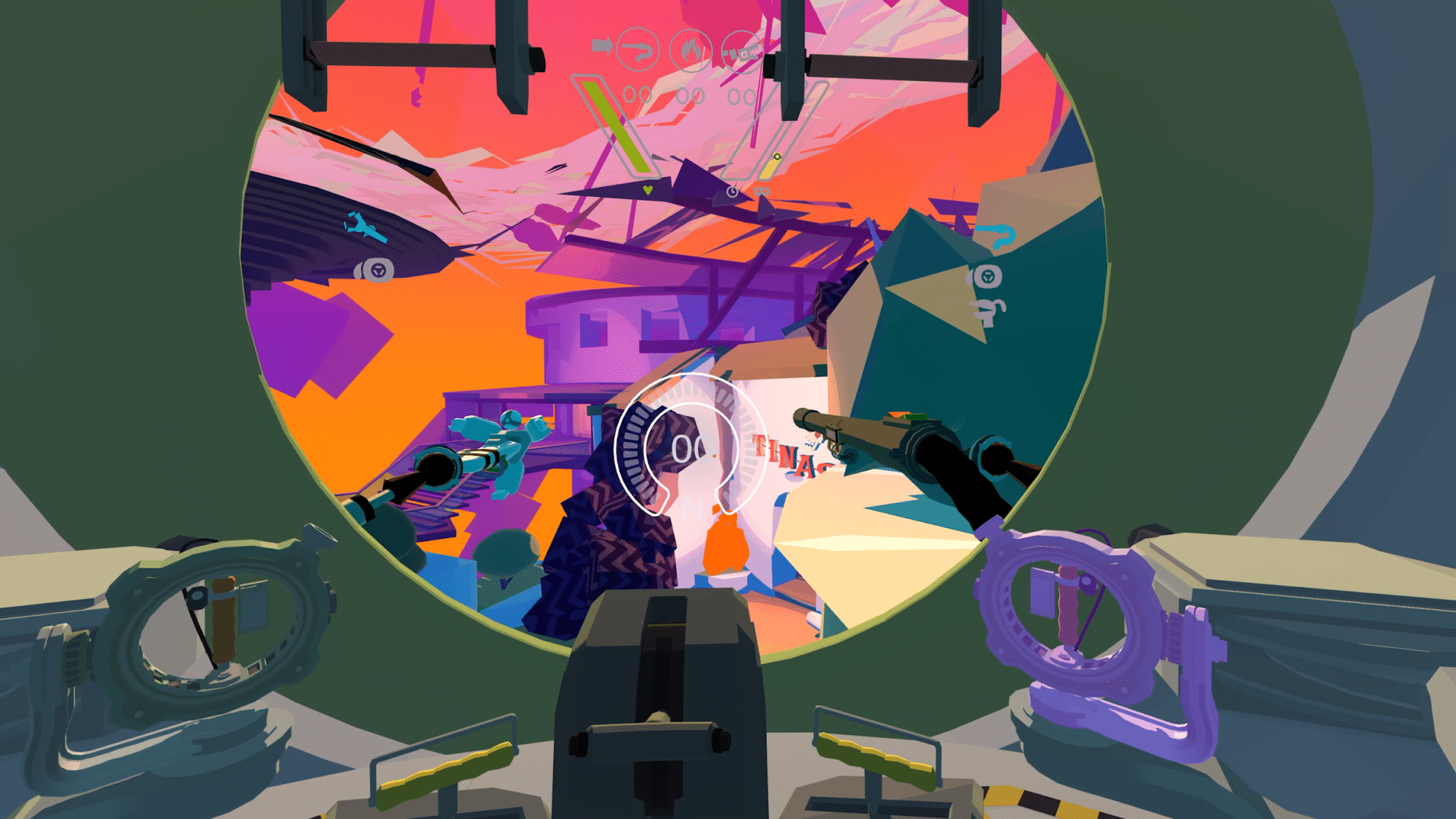
A Blueprint for Native VR Design
At the beginning of VVR2, you’re introduced to Scottsdale – a metaverse world that is soon “shut down” and begins to collapse, delete, and disintegrate around you. Piloting Chaz is your route to escape the metaverse and avoid deletion, with several characters welcomed aboard as the story progresses.
You pilot Chaz from the mech’s control hub, looking through his giant eye like a cockpit. All of the controls are environmental, ignoring the Touch controller buttons almost completely – a throttle to move forward, pulleys for direction adjustment, and spring tabs you pull and release to jump.
This acts as an ingenious system for comfortable smooth locomotion, which should curtail drastic nausea for most players. The mech’s control hub is essentially a native and disguised implementation of FOV vignetting, invisible enough that most players probably won’t even realize it’s preventing them from getting sick.
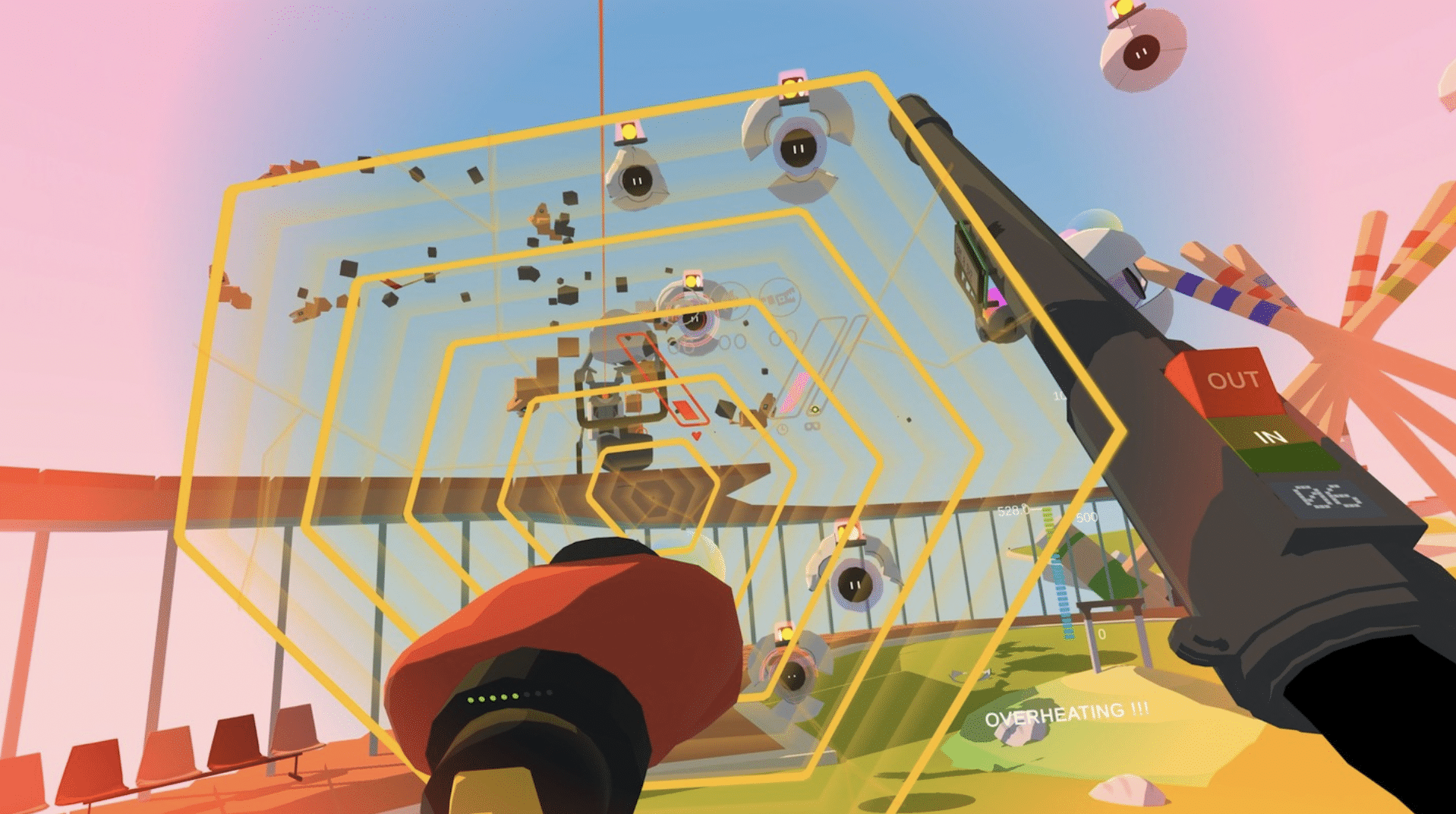
You soon unlock two hands for the mech, alongside hand attachments with expanding functionality — boxing gloves, a vacuum gun, and a hypnotic dog puppet — as you progress.
However, the real boon is that the hands open up a room-scale mode of play. Instead of occupying the cockpit, you can use the hands to ’embody’ the mech, allowing you to explore Scottsdale, engage in combat and solve puzzles in room-scale gameplay, with a teleportation tether that can be shot almost anywhere.
You then get to choose when to use either smooth locomotion or room-scale teleportation for the rest of the game, depending on preference and circumstance. It’s the pinnacle of thoughtful VR design and comfort options, completely avoiding any menus or immersion-breaking UI — other developers should take note.
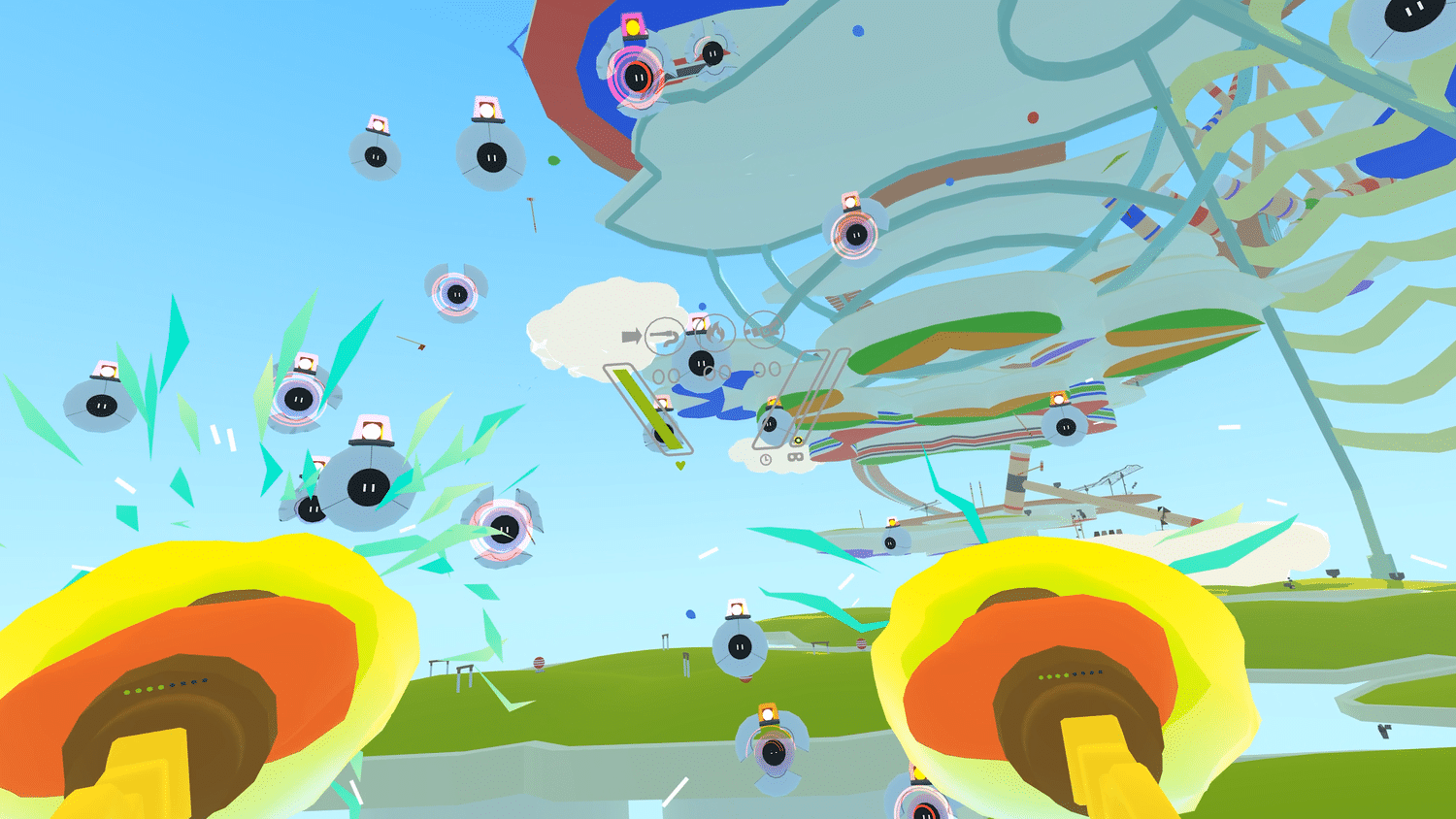
An Homage to Games Past
This dynamic system also allows Tender Claws to showcase a frankly astonishing breadth of gameplay mechanics that take advantage of both movement types while paying homage to genre-leading games from the last decade of VR development.
When the ‘gun’ attachment (more accurately, a vacuum that sucks up environmental objects and spits them back at enemies) is paired with a slow-time mechanic and played in room scale, the game tips its hat to seminal VR titles like Space Pirate Trainer and Superhot.
A later rhythm-based block-chopping game is clearly inspired by Beat Saber, while other segments channel the flight simulator genre as you fly a pilotable VR headset out of the bottom of the mech to shoot at enemies. The main mech platformer sections are of course inspired by other games in that genre, but even the interior mech hub, and how it plays with scale, gives A Fisherman’s Tale vibes.
You’ll later learn to switch between these genres, movement systems, and mechanics at the drop of the hat, coming together in an impressive genre-defying package towards the end. It’s an impressive confluence of VR design principles, homage, and experimentation and perhaps one of the most successful aspects of the game.
It’s not all smooth sailing though…
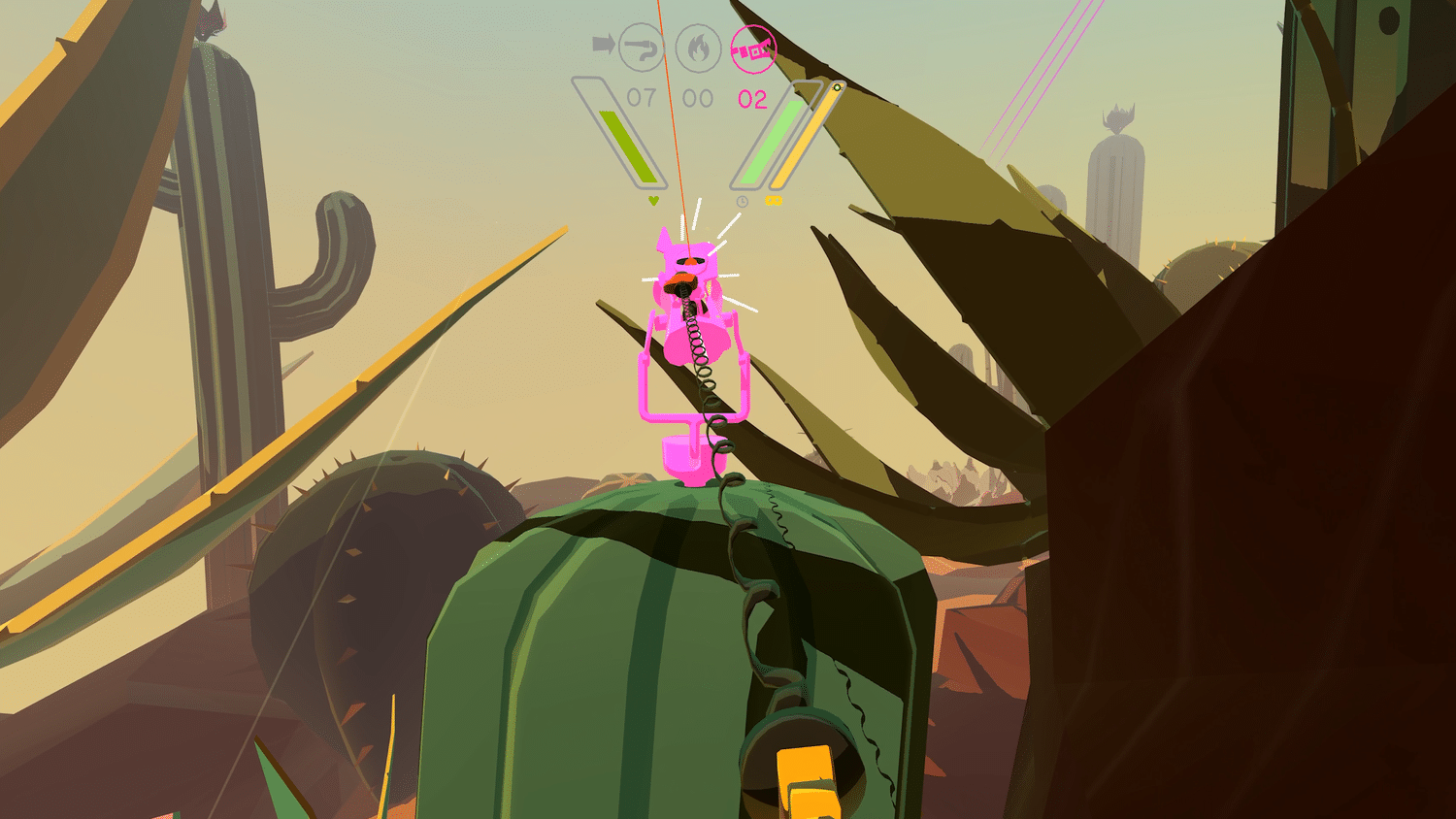
Swatting Bugs
One of the mini-games in VVR2 involves managing worm-like larvae that can breach the mech, halting your journey through Scottsdale until you deal with them. Playing through VVR2, you’ll encounter a series of bugs that start to feel like an ironic version of the larvae mini-game — they infect the headset, and you’ll constantly be halting your experience to squash them before you can continue.
VVR2 launched in a very buggy state, so we put out a review-in-progress and waited to conduct our full review after an incoming patch that Tender Claws said should resolve some of the issues.
Returning to the game post-patch, bugs occur less frequently but remain quite disruptive — none of them seem to be gone entirely.
Scripted events often failed to start correctly. Returning to a suspended game from Quest Home or rest mode often resulted in a frozen black void. Teleportation bugs frequently placed me in inescapable areas. App restarts fix all of these, but can also mean lost progress.
Similarly frustrating is major audio issues, particularly with dialogue. Characters regularly talk over each other and dialogue often sounds way too soft. Spatial audio frequently seems miscalculated — nearby characters sound far away, while others behind several walls still sound like they’re right next to you.
This all might improve with future patches, but the bugs continue to disrupt the experience at the time of writing.
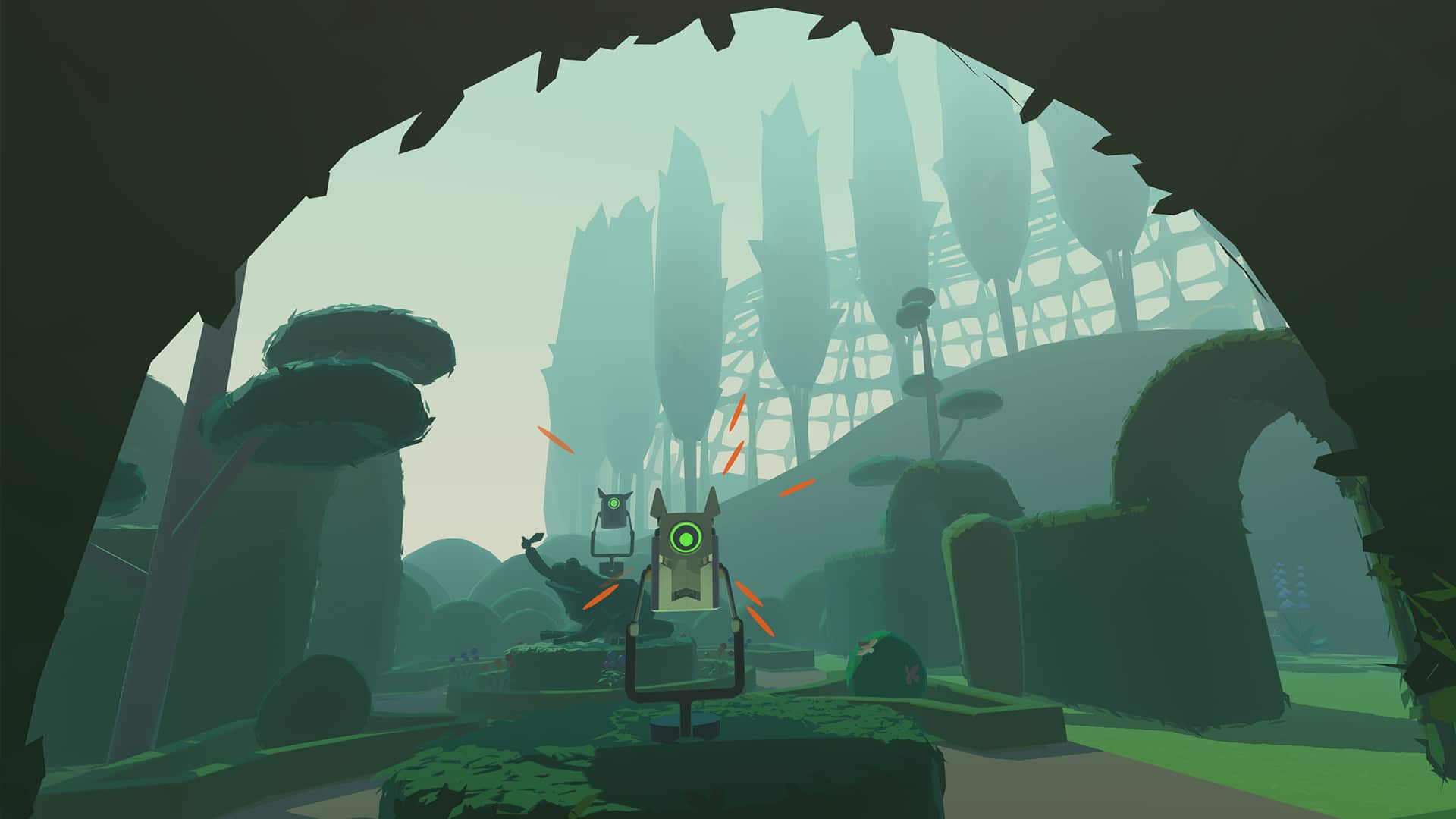
Awe-Inspiring Environments, Disappointing Level Design
VVR2 goes for a more open approach than previous Tender Claws titles, often leaving you to navigate through large semi-open environments in a given chapter.
These environments are so unbelievably varied, awe-inspiring, and huge in scope, almost unlike anything else we’ve seen on standalone hardware. Tender Claws’ trademark aesthetic style is employed beautifully – visually, it’s the studio’s magnum opus.
But despite impressive visuals, the environments also feel woefully ignorant of level design and player pathing.
Tender Claws’ immersion-first approach means the game has no visual objective markers, hints, or directional guides. Instead, NPCs and characters aboard the mech will indicate what to do or where to go through dialogue. Given the plethora of audio bugs, it’s a frustrating method of delivery. Even without those interferences, it’s easy to miss key information.
Even basic level design principles (such as smart use of sightlines, lighting, and color to direct the player) feel completely absent, almost ignored, in many chapters. I often found myself confused and just wanted some kind of visual objective marker. Environments aside, the game’s puzzles are also frequently frustrating – you’ll likely find yourself wondering if you’re just supposed to be waiting around for something to happen or doing something wrong more than once.
Plotting An Escape
VVR2 isn’t just a game about exploring any old metaverse — it’s about what happens when one is actively shut down, deleted around you, and at the end of its life cycle.
Sadly, the narrative never really finds its footing, marred by slow pacing and questionable methods of delivery. Tender Claws’ age-old monologue problem — wordy, lengthy dialogue delivered by characters while you just stand around — is at its worst here, made even more tedious by the audio bugs.
VVR2 also fails to deliver the same level of deep, engaging, and satirical commentary as the first game. The original Virtual Virtual Reality dealt with an emerging technology — virtual reality headsets — that was real and relevant at the time of release.
The metaverse may be a relevant topic at the moment, but it also doesn’t exist yet. It is a purely conceptual technology, so far only realized in the form of overly-corporate and theoretical promo videos.
Because of this, the game’s script feels like it has a lot less to work with and isn’t nearly as compelling or biting as the original. The infinite possibilities of the metaverse sees the writers go truly wild with surrealist concepts and scenarios, but these fail to engage in any way beyond just being overly ridiculous. With no narrative weight behind the zany ideas, they just come off as crazy for crazy’s sake and it all falls a bit flat.
Virtual Virtual Reality 2 Review — Final Verdict
VVR2 often feels like a tale of two games — conceptually, it gets a lot right, but the execution varies wildly. At times, it’s incredibly innovative and pays beautiful homage to seminal virtual reality experiences. It’s clearly Tender Claws’ most experimental and ambitious ‘game’ yet, but that comes at a big cost to level design, plot, and stability. The bugs remain quite disruptive, verging on making the game difficult to recommend. It’s certainly not for beginners, or even most VR users.
Whether you’ll enjoy the experience depends on what you value in a game and what (and how much) you’re willing to look past. Considering Tender Claws’ penchant for artistic flair, it feels ironically poetic — just like Scottsdale itself. Virtual Virtual Reality 2 can be beautifully idealistic and a crumbling mess. More often than not, it’s both at once.
Virtual Virtual Reality 2 is available now for Meta Quest 2 and Oculus Rift and coming soon to SteamVR.
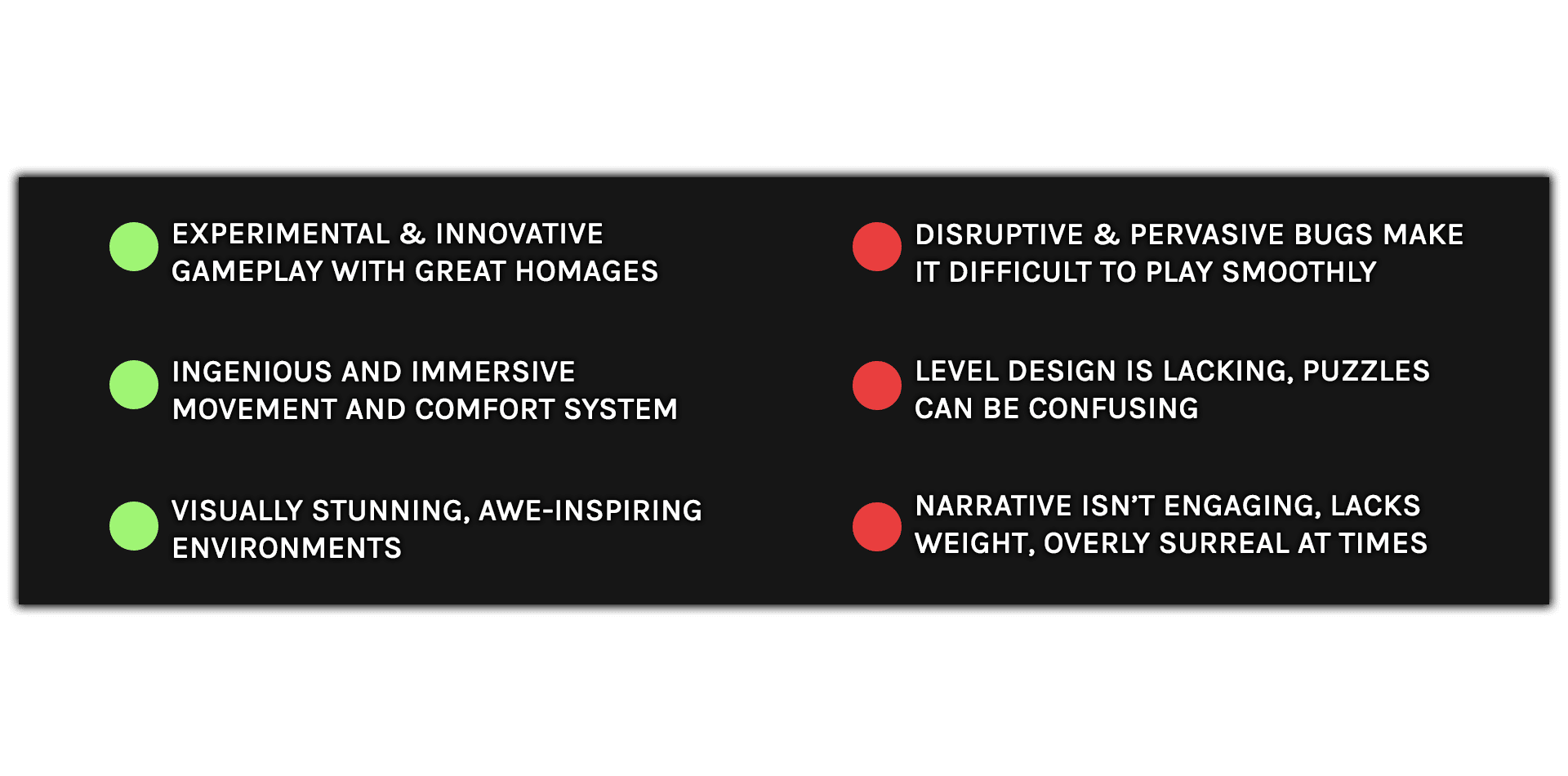
UploadVR recently changed its review guidelines, and this is one of our new unlabeled reviews. You can read more about our review guidelines here.
This review was conducted on the Meta Quest 2 version of the game.

